Did you know that over 14 million shipping containers sit unused worldwide, ready to be upcycled for greener projects? The world is facing an environmental crisis, with overflowing landfills and increasing demands on our planet’s resources. Yet, an unlikely hero—shipping containers—are being reimagined into eco-friendly solutions for storage, housing, and business needs. This article uncovers how shipping containers, often seen as industrial relics, are becoming powerful tools for sustainability-minded consumers and businesses seeking reliable, green storage and building alternatives.
“Did you know that over 14 million shipping containers sit unused worldwide, ready to be upcycled for greener projects?”
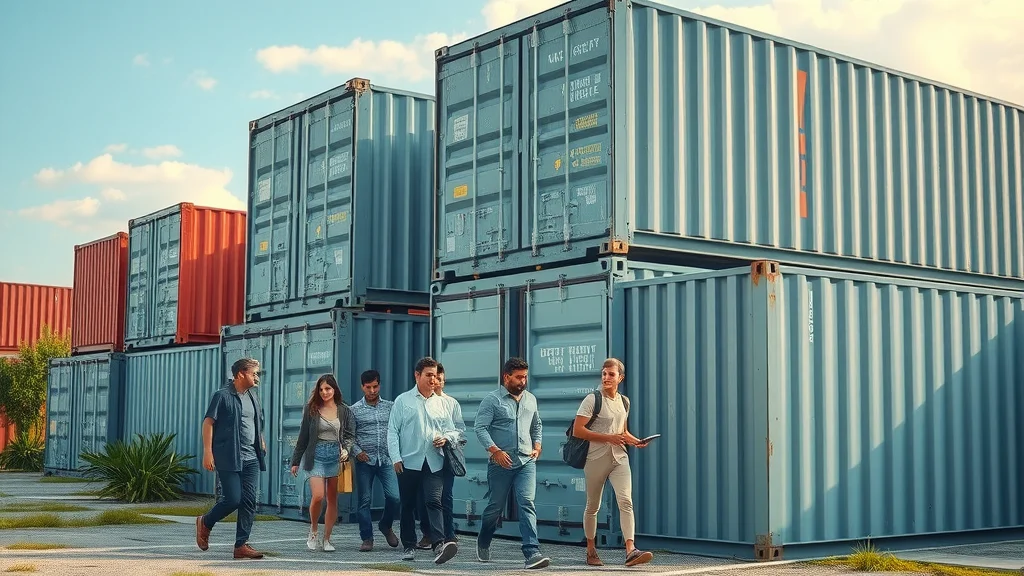
A Surprising Move: The Sustainability Impact of Shipping Containers
Shipping containers are more than just industrial workhorses—they’re emerging champions in the push for a greener world. By repurposing retired containers for use in homes, offices, and storage solutions, we’re giving new life to robust materials that would otherwise stand idle or end up as scrap. This sustainable approach reduces waste, limits the need for new construction materials, and cuts down on the carbon emissions typical of resource-intensive building methods. Choosing containers for sale not only means less environmental strain but also provides durable and versatile spaces that can be customized to almost any need, from a Conex box office to a cozy backyard studio. The secret is in the container’s design—modular, stackable, and incredibly adaptable, making it a favorite for eco-conscious individuals and organizations seeking cost-effective, environmentally responsible alternatives to traditional storage units or construction projects.
Compared to traditional methods, using shipping containers can dramatically lower both your carbon footprint and project timelines. Whether you’re a business looking for a temporary office space or a family wanting a unique home, containers provide impressive benefits. The robust corten steel walls remain sound through years of wind and water exposure, ensuring longevity with minimal maintenance. Pairing these qualities with their obvious upcycling benefits, it’s easy to see why shipping containers are at the front lines of sustainable design. By investing in shipping containers, you not only save on original price and resources but also foster a more circular economy—helping reshape our built environment for a greener tomorrow.
For those interested in taking their eco-friendly container project a step further, exploring shipping container modifications can unlock even more sustainable and functional possibilities. Customizing containers with energy-efficient features or tailored layouts ensures your solution is both green and perfectly suited to your needs.
Why Shipping Containers Lead the Charge in Eco-Friendly Construction
Shipping containers uniquely enable rapid project deployment with much less environmental impact than traditional building materials. Made to withstand the harshest conditions of international shipping, they feature tight seals and solid steel construction, ensuring they’re highly durable even after years of service as storage units or as part of commercial office spaces. Through strategic refurbishment, containers can eliminate the need for new steel production, slashing energy use and greenhouse gas emissions. What’s more, the straight-forward stacking and modular nature bring instant scalability. Need more living space or storage? Simply add another box, taking advantage of their uniform ft width and vertical clearance.
Because millions of conex box units are available for upcycling, sourcing a cargo-worthy container is simple, and their adaptability turns them into the perfect container for almost any scenario. Residential owners are embracing these innovations for affordable living spaces, while businesses are discovering fast, flexible solutions for storage or mobile offices. The shipping container’s journey from cargo workhorse to green building block is redefining what’s possible in sustainable architecture and efficient storage solutions worldwide.
What You’ll Learn About Shipping Containers as Eco-Friendly Solutions
-
The environmental advantages of repurposing shipping containers
-
Key features and sizes of shipping containers
-
How shipping containers compare with traditional building methods
-
Practical considerations when buying shipping containers
-
Answers to common questions about shipping container homes and storage
Understanding Shipping Containers: Features, Types, and Sizes
To make the most sustainable choice when searching for containers for sale, it’s crucial to understand the diverse landscape of shipping containers. Their design—from basic 20-footers to specialized high cube models—lets you tailor your storage unit or modular space to your needs. Knowing the typical features, standard dimensions, and customization possibilities will help you select the right storage solution, living space, or office space while maximizing durability and eco-friendliness. Selecting the appropriate container size ensures efficient use of space and resources, further contributing to sustainability goals.
Shipping containers are engineered for resilience under demanding conditions, featuring weather-resistant finishes, reinforced structural integrity, and easy-to-modify interiors. Whether you need just enough room for goods in transit or an open-concept design for modern living, you’ll find a container configuration to match. Understanding these options lets buyers visualize the end-use—be it a small residential storage container or a full-scale Conex box home—while ensuring the purchase aligns with your long-term green objectives.
Shipping Container Sizes and Configurations
The industry standard for shipping containers revolves around a few key sizes, each designed for a specific usage and maximizing ft of straight clearance or vertical clearance. The most common options are 20ft and 40ft containers, but variations such as high cube models (offering extra ft vertical clearance) or custom lengths are widely available for diverse needs. Selecting the right container size is critical for sustainable planning, as you’ll want sufficient space without excess unused volume, thereby minimizing wasted materials and unnecessary storage costs. Consider both external and internal dimensions, as these impact not just storage solution suitability but also site access and installation requirements—especially when straight or vertical clearance is limited.
Configurations can further extend to open-sided containers for easy access, double-door models for large items, or even refrigerated units for temperature-sensitive goods. Whether your focus is maximizing storage units, creating modular office spaces, or building dynamic living spaces, recognizing the advantages of each container type and size will help ensure your project efficiently utilizes resources while achieving the sustainability you seek.
|
Size |
Dimensions (L x W x H) |
Weight Limits |
Common Uses |
|---|---|---|---|
|
20ft Standard |
20′ x 8′ x 8.5′ |
Max Gross: 67,200 lbs |
Residential storage, small office, pop-up shops |
|
40ft Standard |
40′ x 8′ x 8.5′ |
Max Gross: 67,200 lbs |
Warehousing, large storage units, modular homes |
|
40ft High Cube |
40′ x 8′ x 9.5′ |
Max Gross: 67,200 lbs |
Living spaces, high-volume storage, office space with tall ceilings |
|
Specialized (e.g., Open Side, Refrigerated) |
Varies |
Varies |
Cargo-worthy, temperature-sensitive storage, unique builds |
Types of Shipping Containers: Standard, High Cube, and Specialized
When exploring shipping containers, it’s important to recognize the main distinctions among types—each with sustainability implications. Standard shipping containers offer a solid starting point for most storage solutions and construction projects, typically providing around 8 feet of width and 8.5 feet of vertical clearance. High cube containers add another foot in height (totaling 9.5 feet vertical clearance), making them a highly sought-after option for projects needing extra space for living or working environments. Specialized containers, such as open-sided or double-door models, accommodate specific functionality: whether for easy access, increased ventilation, or customized builds such as modular classrooms or mobile pop-up offices.
Choosing between standard, high cube, or specialized containers will depend on your intended use, the requirements for insulation, and your goals for energy efficiency or space maximization. High cube options, for example, are popular in container homes and offices due to their generous ft vertical clearance, while specialized models are essential for tailored business needs. Exploring these choices with your sustainability lens ensures that every square foot is put to purposeful use—minimizing waste and maximizing value from each unit sourced.
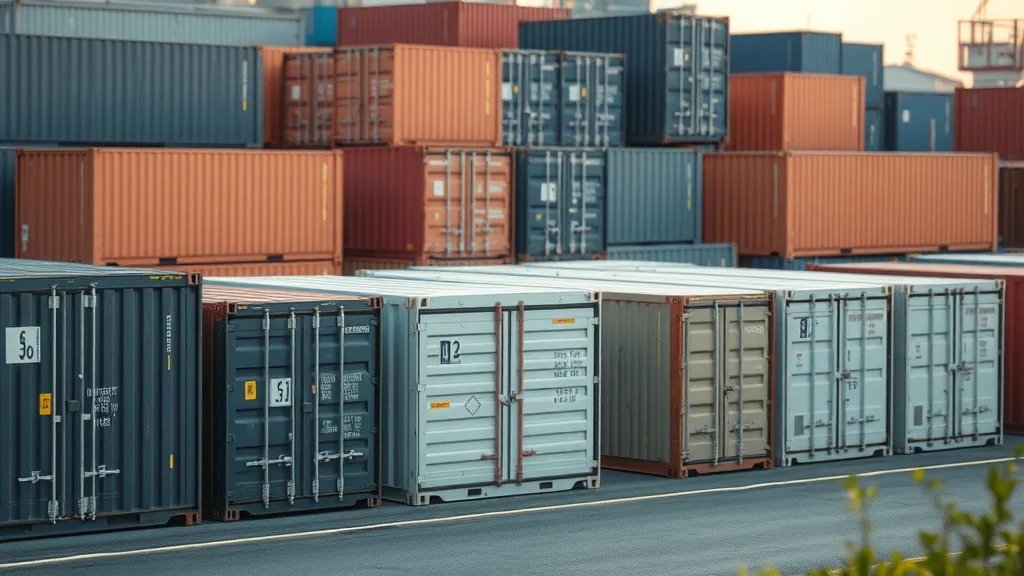
Materials and Durability: What Makes a Shipping Container Eco-Friendly?
The eco-friendliness of shipping containers begins with their materials: predominantly heavy-duty corten steel, designed to withstand the stresses of international shipping, harsh weather, and frequent handling. This steel resists corrosion and wear and tear, ensuring longevity far beyond their original price and intended shipping life. Shipping containers are engineered to be wind and water tight, providing powerful protection against the elements and helping to extend the service life when repurposed as a storage unit or livable structure. These qualities mean fewer replacements, less landfill waste, and a significant reduction in resource consumption needed to fabricate new building materials.
Beyond strength, refurbished cargo-worthy containers can be retrofitted with green additions—like added insulation or solar panels—multiplying their sustainability benefits. Unlike many traditional storage units or construction materials that break down quickly, shipping containers maintain structural integrity for decades with minimal upkeep. Opting for such proven durability in your next build or storage project isn’t just cost-efficient—it’s a decisive move toward minimizing environmental impact for the long term.
Shipping Containers vs. Traditional Construction: Eco-Friendly Benefits
What sets shipping containers apart from traditional building methods? It’s their exceptional environmental performance from production to end use. The carbon footprint of container projects is often a fraction of that for brick-and-mortar construction thanks to the upcycling of existing steel modules. The modular design cuts material waste—every inch of space and steel is put to use, drastically reducing the creation of leftover debris. With the range of containers for sale today, innovators can plan smart, efficient builds that help the environment without sacrificing functionality or style.
Builders and eco-conscious consumers are also drawn to shipping containers for their predictable schedules and rapid assembly. Traditional buildings can take months to erect and cost more to maintain, while container-based projects are often operational in a fraction of the time. These unique advantages make containers an ace choice for forward-thinking developers, families, or businesses aiming to balance affordability, speed, and environmental stewardship in their next project.
Lower Carbon Footprint of Shipping Containers
The environmental impact of using shipping containers for your next storage or construction project is clear. When a shipping container is reused instead of being melted down as scrap, it saves the vast energy and carbon emissions required in the steel recycling process. This repurposing also eliminates the need to manufacture new building materials, further slashing your project’s carbon footprint. With containers designed to stack and connect, you’ll also enjoy logistical efficiencies, reducing the carbon impact typically associated with transporting traditional building supplies across business days and sites.
Many eco-friendly developments are taking advantage of these benefits by installing solar panels atop high-cube containers—combining sustainable energy with a recycled structure. As property owners strive to maximize energy efficiency and minimize emissions, the shipping container stands out as a practical and proven ally in meeting these ambitious goals.
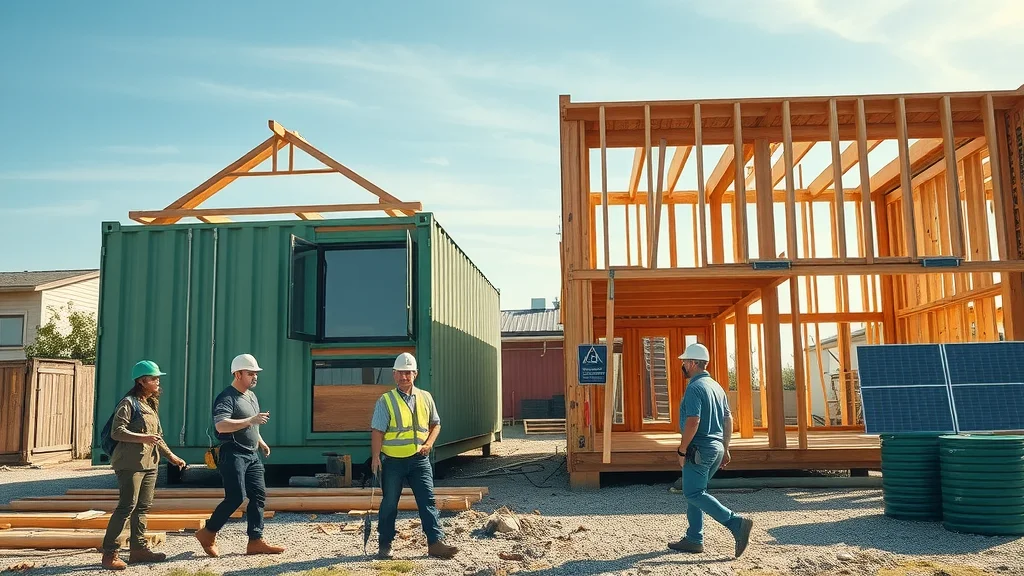
Waste Reduction and Recycled Materials
Every shipping container that’s repurposed becomes a testament to resource efficiency. Instead of letting millions of boxes rust away in shipping yards, creative individuals, businesses, and developers are transforming these robust containers into modern storage solutions, offices, and housing. This process diverts tons of steel from scrap, reducing landfill waste and driving the circular economy—one in which materials are kept in use for as long as possible. The constant availability of containers for sale makes this an easy, sustainable swap for traditional, single-use construction materials that might deteriorate rapidly or pose disposal challenges at their end-of-life.
In applications like storage units, office spaces, and new builds, the container’s modular nature means there’s little excess or leftover material. When further modifications are needed, such as adding windows or insulation, these changes are targeted and minimize debris. This targeted approach to retrofitting contributes to waste reduction and signifies why shipping containers are the leading edge of eco-conscious design practices worldwide.
Energy Efficiency and Adaptability
Modern shipping containers can be easily adapted with insulation, airtight seals, and even renewable energy systems. Their modularity allows for rapid and energy-efficient builds compared to traditional methods; less heavy machinery, fewer transport trips, and efficient layouts mean less overall energy input per project. In climates where energy costs climb, a well-insulated high cube or standard shipping container offers impressive year-round temperature regulation, thanks to robust corten steel construction and the option to add innovative climate control solutions or solar panels for off-grid operation.
This high level of adaptability is changing how we think about affordable, eco-friendly living spaces and office spaces. Need more storage unit area or want to add a new living space? Shipping containers allow for seamless expansion—simply attach additional units for instant extra capacity or square footage, a true game-changer for sustainable development.
Shipping Containers for Sale: Making the Sustainable Choice
The growing availability of containers for sale means it’s never been easier for consumers and businesses to make the switch to greener infrastructure. When buying new or used shipping containers, evaluating sustainability means checking more than just the original price or appearance—it involves considering the environmental impact of your choice, from manufacturing to intended reuse, and from carbon footprint to adaptability for your specific needs. A cargo-worthy or wind and water tight container ensures the longevity and reduced wear and tear required for long-term use in a variety of living spaces, storage units, or office space projects.
Buyers should seek out reputable vendors dedicated to sustainable practices, including thorough inspection, eco-friendly refurbishment, and transparent lifecycle documentation. Understanding the market landscape is crucial to finding a shipping container that balances price, performance, and a positive sustainability profile. Prioritizing these criteria helps ensure your next project is both resource-smart and environmentally conscious, meeting the highest standards of today’s green building movement.
Evaluating Containers for Sale: Factors That Impact Sustainability
Sustainability starts with knowing what to look for in both new and used shipping containers. High cube units may offer better adaptability for living or storage solutions thanks to their vertical clearance, but be mindful of what level of modification is required for your intended use. Check for wind and water tight certification, signs of previous wear and tear, and whether or not corten steel construction has been maintained in spite of age. Reputable vendors—or those offering comprehensive product details on cargo-worthy status—are better equipped to help you navigate options to maximize both value and eco-friendliness, whether you’re investing in a storage unit or a modular office space solution.
Some of the most environmentally impactful choices involve purchasing used containers in good condition, reducing demand for new steel production, and avoiding unnecessary disposal of functioning materials. Each step towards prioritizing refurbished containers, careful sizing, and minimal alteration translates to real gains in energy savings and resource reduction. In short, making the right purchasing decisions is as important for your wallet as it is for the planet.
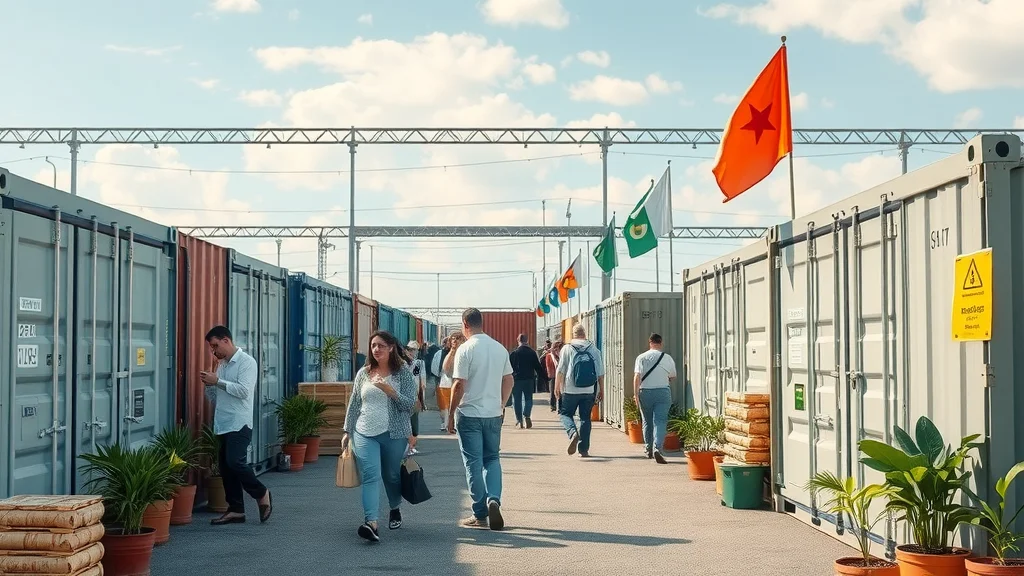
Average Costs: New vs. Used Shipping Containers
Cost is always top of mind when considering any major purchase. When it comes to shipping containers, the choice between new and used units often blends budget considerations with long-term sustainability. New containers come at a premium price but offer pristine interiors, uniform performance, and a consistent service life—great for buyers demanding the utmost in cosmetics or longevity for unique living spaces. Used containers, meanwhile, represent tremendous value for those happy to work with minor cosmetic blemishes or wear and tear.
Used containers typically come at a fraction of the original price, reducing your upfront costs and shrinking your environmental footprint. Expect to find a wide range of containers for sale, from near-new to well-worn, with corresponding price variances. The balance of cost, condition, and eco-friendly value should be evaluated case by case. Often, it’s possible to score a cargo-worthy, wind and water tight container at a price-point that rivals even the most affordable traditional storage units, making them the perfect container solution for countless situations.
|
Condition |
Price Range |
Estimated Longevity |
Environmental Impact |
|---|---|---|---|
|
New |
$3,000–$6,000 |
40–50+ years |
Higher resource use (new steel), lower immediate wear and tear |
|
Used (Cargo-Worthy) |
$1,500–$4,000 |
25–40 years |
Reduces waste, upcycled materials, minor wear and tear |
|
Wind & Water Tight |
$1,200–$3,500 |
15–30 years |
Upcycled, some repairs needed, best for storage units |
Practical Applications: Shipping Containers as Storage and Building Solutions
Shipping containers offer a remarkable array of practical uses, especially for those seeking a sustainable storage solution or innovative building projects. Their rugged, modular form factor makes them the preferred choice for home owners, businesses, and community groups alike—delivering secure, portable, and customizable options. Whether housing your garden tools or office supplies, a shipping container outperforms many traditional storage solutions on cost, security, and ecological footprint. The same logic holds for ambitious modular homes and offices, where quick deployment and efficient insulation drive down both costs and carbon emissions over the structure’s lifetime.
With containers for sale at almost every size and condition, the path to eco-friendly property development has never been more accessible. Buyers can select from basic storage units, advanced high cube models, or specialty types to match precise requirements—be it for a pop-up cafe, a residential suite, or an agile business center. Each use case leverages the inherent durability and upcycling advantages of shipping containers, proving their worth well beyond the shipping yard.
Shipping Containers as Storage Solutions for Homes and Businesses
Homes and small businesses flock to shipping containers for reliable, weatherproof storage solutions. The standard shipping container’s robust build—using wind and water tight corten steel—eliminates traditional headaches around leaks, pests, and rapid wear and tear. For homeowners needing extra space for gardening tools, seasonal equipment, or even bikes and outdoor furniture, a properly placed container becomes the ultimate storage unit. Businesses, from retail to service providers, use containers to safeguard supplies, inventory, or machinery, confident in decades-long durability and easy relocatability based on changing needs.
Residential storage units made from containers offer security features such as steel locking bars, reinforced hinges, and easy conversion for climate control. For enterprises, the ability to brand and stack containers to create storage clusters is a proven competitive edge. With options ranging from 20ft to 40ft and high cube models, finding the perfect container size to match the required sqft is straightforward. This consistent adaptability—paired with significant environmental benefit—redefines what’s possible for modern storage solutions today.
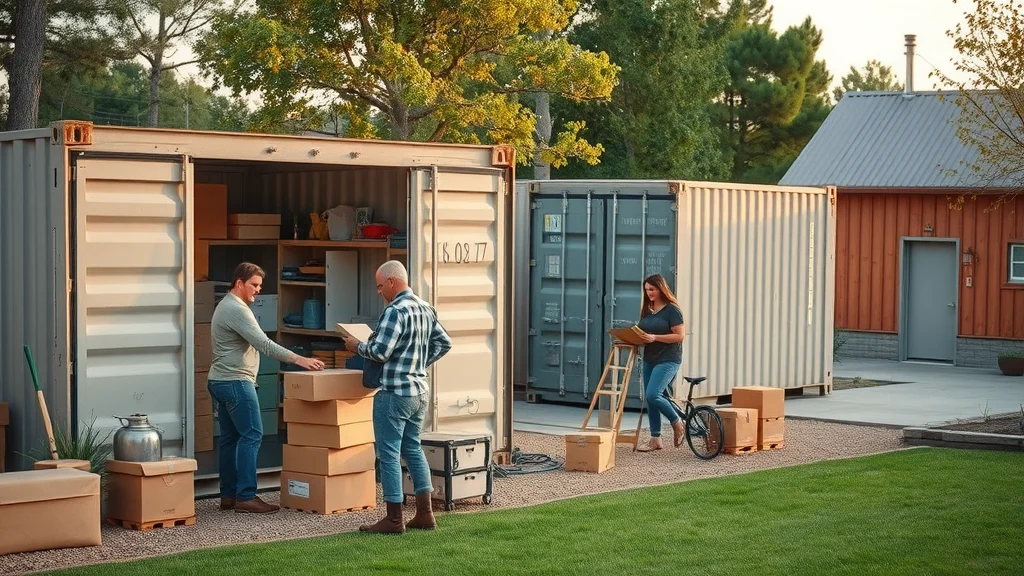
Container Homes and Offices: Innovation in Sustainable Living
The trend toward container homes and offices is redefining how we think about affordable, flexible, and eco-friendly living space and office space. A high cube or standard shipping container can effortlessly transform into an innovative living or working area equipped with modern amenities, green insulation, energy-efficient lighting, and even renewable power sources like rooftop solar. Homebuilders and developers are customizing these containers for residential communities, vacation rentals, or portable offices—offering striking design with a much lighter environmental footprint than new construction.
Container-based office spaces and homes can be completed in a fraction of the time typical of traditional builds, saving on labor, cost, and site impact. These structures offer modular expansion—add more units for greater square footage or unique room layouts as your needs evolve. With their enduring corten steel skeletons, container homes can withstand decades of use with minimal ongoing maintenance, proving themselves as future-forward options in sustainable development across both urban and rural landscapes.
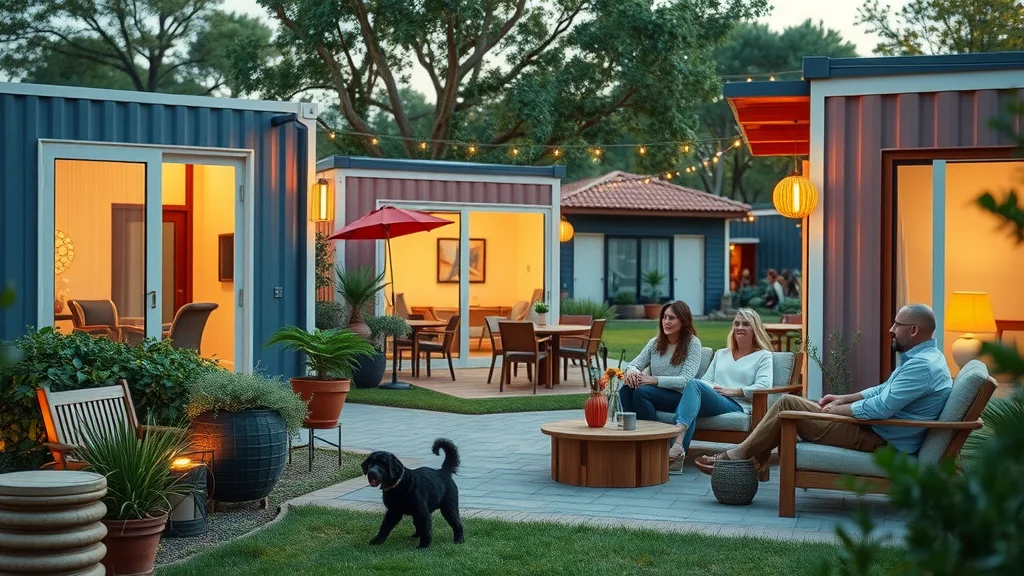
Conex Box Projects: A Model of Versatility and Sustainability
Few examples better embody the value of upcycling shipping containers than conex box projects. These highly adaptable units are transforming vacant lots and underutilized spaces into vibrant commercial, community, and residential centers. Conex boxes are selected for their long, straight ft of clearance and rugged construction—easily modified for pop-up stores, portable classrooms, or scalable office complexes. Customizable doors, window placements, and insulation packages make them suitable for nearly any climate or application, propelling their widespread adoption as storage solutions and dynamic spaces around the world.
Because they’re designed for international shipping, conex boxes are already wind and water tight, providing intrinsic security and resilience. Developers and owners report that project timelines shrink and flexibility soars when using these recycled units as core building blocks. Whether outfitted as storage units, living spaces, or multi-box complexes, conex box projects show what’s possible when sustainability and innovation meet.
A short video showcasing real projects where shipping containers are transformed into homes, offices, and eco-friendly storage solutions. Includes time-lapse sequences of builds, before-and-after shots, interviews with owners and builders, and infographics comparing carbon impact.
Key Benefits: Why Shipping Containers Stand Out for Eco-Friendly Projects
-
Recycled and Upcycled Materials
-
Cost-Efficient Storage and Construction
-
Versatility Across Sectors
-
Portability and Modular Design
-
Long Lifespan and Durability
“Choosing a shipping container means giving new life to existing materials while reducing your environmental impact.”
Shipping Containers for Sale: What to Look For
Not all containers for sale are created equal—so knowing what to inspect can make all the difference in securing the right unit for your needs. Assess the condition of exterior steel for corrosion, evaluate interior cleanliness, and ensure doors, seals, and hinges are operational. Look for labels or signs verifying wind and water tight status, denoting a container’s ability to withstand the elements during many more years of service. Carefully check size and configuration to match your living space, office space, or storage solution requirements, paying particular attention to straight and vertical clearance in your intended project area.
Sourcing from reputable dealers ensures peace of mind, particularly when transparency is provided about the history, repairs, and intended certifications of each unit. By focusing your purchase on genuine cargo-worthy or carefully refurbished containers, you pave the way for dependable, safe, and eco-friendly applications, whether you’re building a new home, storage unit, or pop-up office space.
Inspection Tips for Shipping Containers
When evaluating containers for sale, a thorough inspection is essential. Check for major dents, structural issues, and integrity of the corten steel body. Look for signs of significant rust, but don’t panic over surface-level oxidation, which is common in outdoor units. Interior evaluation should check for light leaks, water intrusion marks, and lingering odors or stains. Test the doors—ensure proper closure and easy operation, as fit and finish play a key role in wind and water tight status. If buying a high cube or specialty container, verify vertical clearance and all specialty features are functional.
Ask sellers for maintenance and service records, particularly for used cargo-worthy units. Confirm if containers have undergone recent repairs or have earned certifications for their current condition. By following these practical steps, you can confidently choose a container that’s primed for sustainable, long-lasting use in your next project.
Comparing Container Sizes and Configurations for Your Needs
Choosing the correct container size and configuration is more than a matter of space—it’s a decision that impacts energy usage, adaptability, and environmental footprint over the container’s lifespan. For straightforward storage solution needs, a 20ft standard unit may suffice. If you need more living space or want to build out modular offices, a 40ft high cube may unlock extra comfort and function—thanks to its additional ft vertical clearance. Specialized configurations, such as open-side or double-door options, further empower owners to match practicality with sustainability by accommodating oversized goods or optimizing site layouts with minimal customization.
By carefully weighing these factors before purchase, you ensure that every square foot and dollar is put to optimal use—creating efficient, flexible, and earth-friendly storage units, offices, or homes for years to come.
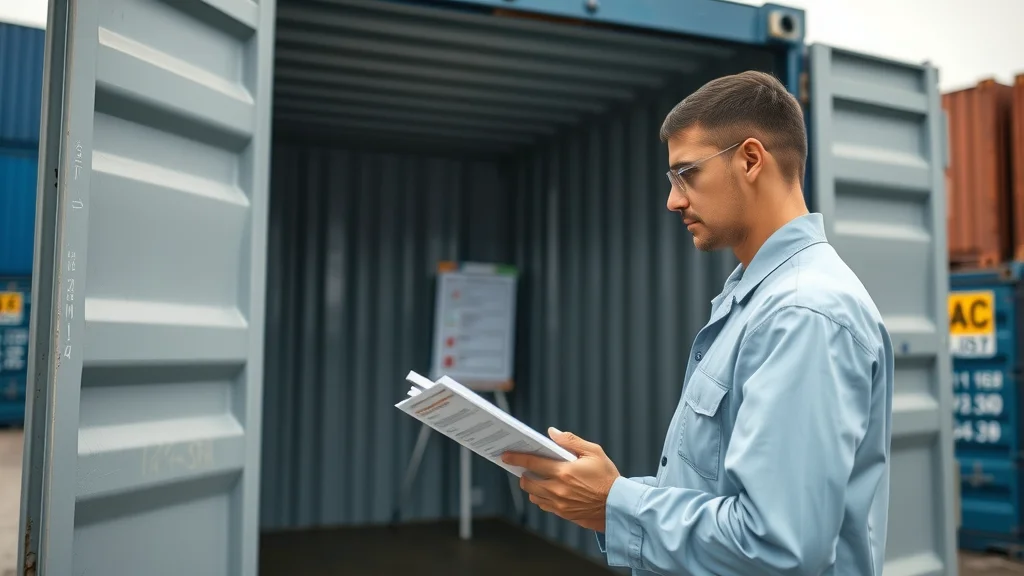
How to Ensure Sustainable Sourcing of Shipping Containers
Responsible purchasing begins with selecting suppliers known for eco-conscious operations. Seek businesses that prioritize upcycled materials, transparent refurbishment practices, and ethical disposal of no-longer-viable containers. Request documentation on the container’s previous service, repair history, and any relevant eco-certifications. Whenever possible, favor cargo-worthy units and reputable local vendors, as this minimizes emissions related to shipping or overland transport.
Prioritizing containers for sale that have been professionally inspected and documented for durability reduces the chance of surprises, ensuring your storage solution or building project stays both sustainable and cost-effective. Inquire about any warranties or guarantees related to structural integrity, as this further solidifies your investment in green infrastructure with long-term potential. Doing due diligence pays off in peace of mind and a greener environmental legacy.
Containers for Sale: Where to Buy and What to Know
With increasing demand for eco-friendly storage and construction solutions, reputable sources for containers for sale are now more accessible than ever. Local dealers, major shipping depots, and specialized container refurbishers all offer a selection of sizes and configurations to meet diverse needs. For buyers seeking high cube, cargo-worthy, or wind and water tight units, specializing in upcycled product lines often brings the best blend of durability and value. Online marketplaces can be helpful, but always check for verified seller credentials and positive customer feedback before closing a deal.
Working directly with established vendors ensures you receive comprehensive support, including on-site inspections, customized modifications, and logistical advice for site placement and delivery. By collaborating with container experts—including options for on-site refurbishing or tailored fit-outs—you can transform your project vision into a reality without losing sight of your sustainability mission or compliance requirements.
Trusted Sources for New and Used Shipping Containers
When searching for containers for sale, prioritize direct importers or established dealers with a presence in your region—they manage larger inventories and offer in-person inspection opportunities, which is vital for ensuring product quality and fair pricing. Reputable vendors offer both new and used options, transparent listings about condition, and, ideally, access to eco-friendly upgrade services. Ask about certification for wind and water tight status or repairs, and whether modifications (windows, doors, insulation) can be included before delivery.
Local dealers often maintain relationships with global shipping companies, allowing them to supply high-quality decommissioned units at competitive prices. For clients with unique needs, some vendors provide on-demand sourcing to track down rare sizes, high cube models, or specialty containers, further ensuring a perfect fit for your sustainable project without sacrificing peace of mind or environmental benefit.
Shipping and Delivery Logistics for Shipping Containers
Shipping container delivery is a logistics process that can influence overall sustainability. Choose vendors who offer transparent lead times (often measured in business days), clear delivery costs, and expertise in managing site access, whether you need straight or challenging vertical clearance for drop-off. Confirm the requirements for delivery equipment, such as tilt-bed trucks or cranes for stacking multiple units or placing containers on challenging terrain.
Proper site preparation—including securing a level surface or a foundation tailored to your local climate—can further reduce complications and maximize container longevity, especially for those converting their purchase into a storage solution, home, or office. Review site logistics prior to ordering to ensure seamless, cost-effective deployment, and always account for total footprint, access routes, and future expansion as you build your eco-friendly project.
Review Spotlight: Real-World Experiences With Shipping Containers
“Our business cut costs and our carbon footprint by switching to shipping container offices.” – Verified Buyer
Customer Feedback on Shipping Container Performance
Customers across residential and commercial sectors are enthusiastic about their experiences with shipping containers for sale. Homeowners praise the affordability and reliability of repurposed containers for storage units or backyard studios—often highlighting the seamless adaptability and minimal wear and tear even after years of use. Business owners similarly value the quick turnaround and robust structural integrity these units provide for modular office space, pop-up shops, and long-term warehousing needs, noting ease of access, superior security, and scalability as top advantages.
Many users report substantial reductions in maintenance costs and downtime, with weather-tight corten steel exteriors outlasting standard wooden or prefabricated sheds. The consensus: whether for living space, office space, or storage units, shipping containers deliver remarkable returns on investment and peace of mind in any application.

Case Studies: Notable Eco-Friendly Shipping Container Projects
From community centers constructed from stacked Conex box units to innovative boutique hotels and green commercial complexes, the world is full of inspiring examples of container-based design. A coastal town in the Pacific Northwest transformed surplus containers into emergency housing, providing rapid, sustainable shelter for families in crisis. Meanwhile, a major city retail hub hosts a series of pop-up stores and food markets, each built inside colorfully painted shipping containers—slashing carbon footprint and revitalizing the local economy at the same time.
These projects underline the powerful role that upcycled shipping containers play in meeting modern needs—all while keeping resource use in check and aligning with ambitious sustainability targets. With creativity, commitment, and the right sourcing partners, almost any vision can be brought to life within these durable, adaptable structures.
A collection of video interviews, time-lapse builds, and infographics, highlighting how real people and businesses leverage eco-friendly shipping containers for practical, powerful, and sustainable solutions in storage, homes, and offices.
People Also Ask About Shipping Containers
What is the cost of 40 feet container?
The cost of a 40-foot shipping container typically ranges from $2,500 for a used unit to $5,000 or more for a new, high-cube model, depending on condition and location.
Do you need a concrete slab for a shipping container?
While a concrete slab provides optimal stability and drainage for shipping containers, alternatives like gravel foundations or pier blocks may also suffice for many projects.
What is the lifespan of a container home?
Container homes made from shipping containers can last 25–50 years or longer with proper maintenance, thanks to their robust steel construction and weather resistance.
What is the price of a ship container?
Prices for shipping containers vary widely. Used containers often start at about $1,500, while new containers can cost up to $6,000 based on size, type, and provider.
Frequently Asked Questions About Shipping Containers
-
Can shipping containers be customized for specific uses?
-
How do you maintain a shipping container?
-
What permits are needed for container homes or offices?
Key Takeaways: Why Invest in Shipping Containers for Eco-Friendly Solutions
-
Shipping containers reduce waste by giving new purpose to retired freight.
-
Versatile and strong, they offer cost-effective solutions for storage, housing, and offices.
-
Eco-conscious buyers can significantly reduce their carbon footprint with shipping containers.
Next Steps: Contact Experts for Shipping Containers and Containers for Sale
Ready to find the right shipping container for your needs? Call ManCo Rentals & Sales at 877-915-7368 or Email brett@mancorentals.com for expert advice today.
Ready to build sustainably and save? Shipping containers are the smart, eco-friendly choice for every storage or construction need—start your project today!
If you’re inspired by the sustainable potential of shipping containers, there’s even more to explore about how these versatile units can fit your unique needs. For a broader look at local options, pricing, and quick deployment strategies, check out the comprehensive guide on shipping container solutions in Louisiana. Discover how regional expertise and tailored services can help you make the most of your investment—whether you’re seeking rapid storage, a custom office, or a future-ready home. Dive deeper to unlock advanced tips and local insights that will empower your next eco-friendly project.
